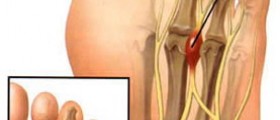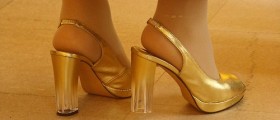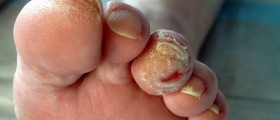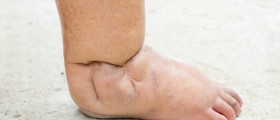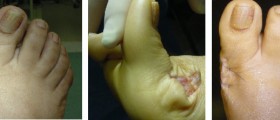Tarsal tunnel syndrome (TTS), also known as posterior tibial neuralgia, is a condition that causes a number of symptoms of vague foot pain. There can be burning. There can be a kind of pins and needles tingling. There can be numbness, and in some cases muscles in the foot will atrophy. These symptoms are usually worse after walking or running and better when the foot is rested.
The cause of tarsal tunnel syndrome is very similar to the cause of carpal tunnel syndrome. There is a tunnel along the inner leg behind the medial malleolus (bump on the inside of the ankle) that protects a nerve that has three branches in the foot. When something puts pressure on this protective tunnel, the nerve transmits pain signals or other unpleasant sensations or doesn't work at all. Usually the pain is worst in the big toe and radiates to the three toes closest to it, sparing the little toe. Fluid can accumulate in the foot so that it becomes swollen. People who have this disease are prone to overpronation, rolling the foot inward, so that the insides of their shoes wear out faster than the rest of their shoes. Overpronation also causes people to walk in ways that relieve pain on the big toe, so that gait changes.
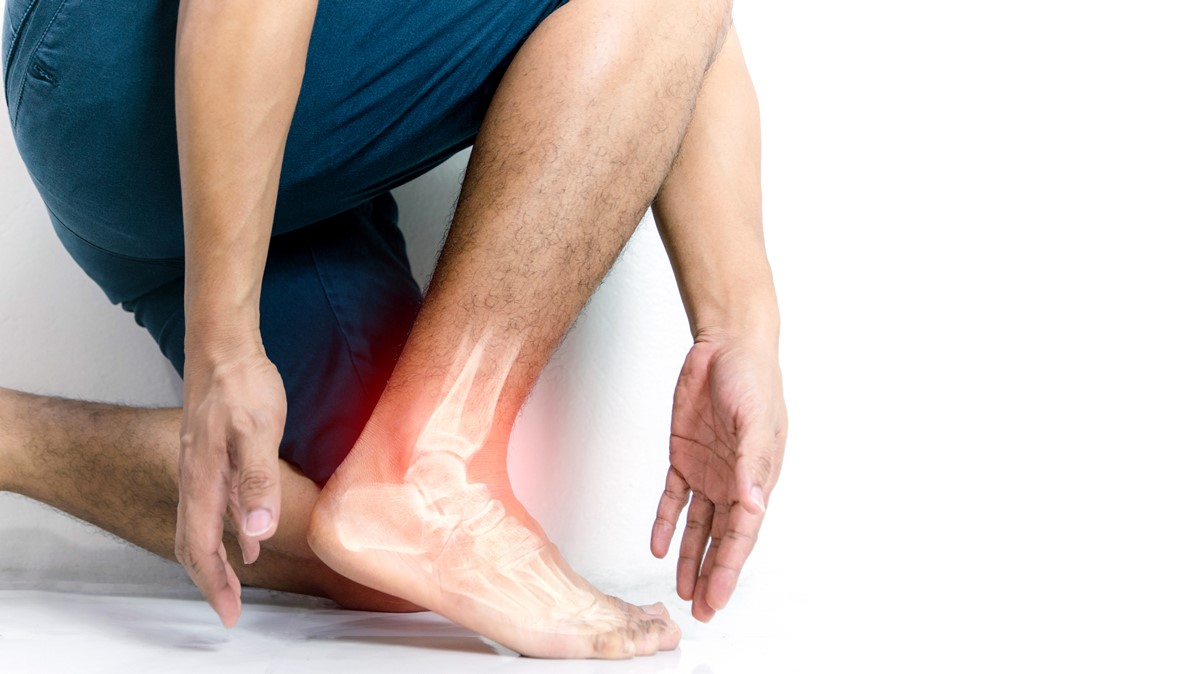
Who gets this foot problem? The incidence of tarsal tunnel syndrome is:
- Higher in women than in men.
- Higher in diabetics than in non-diabetics. Diabetics can also have foot problems due to peripheral neuropathy. However, if rubbing the inside ankle makes the tingling worse, then the symptoms are probably caused by tarsal tunnel syndrome, not be diabetic neuropathy.
- More frequently in athletes whose sport requires a lot of jumping, notably competitive high jumpers, sprinters, men and women who run high hurdles, and soccer (football), lacrosse, volleyball, and basketball players.
- More common in people who experience compression of the feet, such as people who wear tight shoes, women during pregnancy, and the obese.
- People who have rheumatoid arthritis.
Famously, North Korean leader Kim Jong Un had surgery to correct tarsal tunnel syndrome in 2014 and disappeared from the world scene for six weeks.
What can you do about tarsal tunnel syndrome?
- Wear properly fitting shoes. Tight shoes can aggravate or cause the problem.
- Rest. Simply taking a load off your feet reduces stress on the tarsal tunnel. If you run for exercise, you may want to switch to swimming.
- Wear orthopedic shoes. Typically prescribed by a podiatrist and covered by health insurance, orthopedic shoes prevent overpronation and enforce normal gait.
- Use a brace. A brace may be worn at night to keep the foot in a neutral position, rather than flopping to one side.
- Take steroids. Typically given by injection, these drugs relieve pain and inflammation but they do nothing to correct the underlying disease. They also have serious side effects, such as reduced immunity and weight gain.
- Take other pain-control drugs, such as Lyrica or Neurontin.
- Ahmad, M. M., Tsang, K. K., Mackenney, P. J., & Adedapo, A. O. (2012). Tarsal tunnel syndrome: A literature review. Foot & Ankle Surgery (Elsevier Science), 18(3), 149-152.
- Photo courtesy of SteadyHealth






